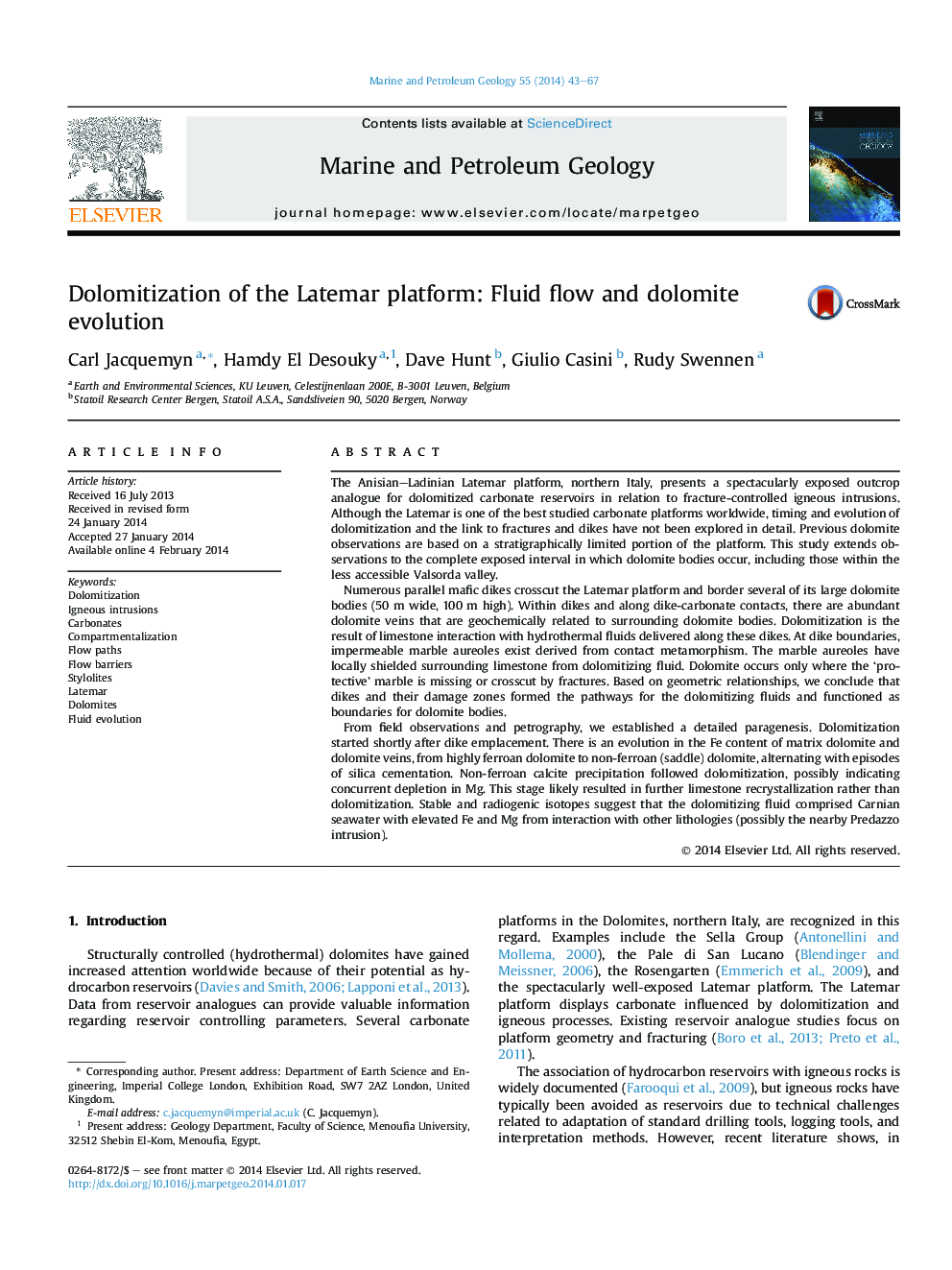| کد مقاله | کد نشریه | سال انتشار | مقاله انگلیسی | نسخه تمام متن |
|---|---|---|---|---|
| 6435423 | 1637169 | 2014 | 25 صفحه PDF | دانلود رایگان |

- Dolomitizing fluid migration along brecciated zones surrounding mafic dikes.
- Metamorphic aureoles prevent fluids entering the surrounding carbonates.
- Gradual depletion in Fe-content from ferroan to non-ferroan dolomite.
- Geochemistry suggests Carnian seawater origin for dolomitizing fluid.
- Dolomitizing fluid is enriched in Fe and Mg by fluid-rock interaction.
The Anisian-Ladinian Latemar platform, northern Italy, presents a spectacularly exposed outcrop analogue for dolomitized carbonate reservoirs in relation to fracture-controlled igneous intrusions. Although the Latemar is one of the best studied carbonate platforms worldwide, timing and evolution of dolomitization and the link to fractures and dikes have not been explored in detail. Previous dolomite observations are based on a stratigraphically limited portion of the platform. This study extends observations to the complete exposed interval in which dolomite bodies occur, including those within the less accessible Valsorda valley.Numerous parallel mafic dikes crosscut the Latemar platform and border several of its large dolomite bodies (50Â m wide, 100Â m high). Within dikes and along dike-carbonate contacts, there are abundant dolomite veins that are geochemically related to surrounding dolomite bodies. Dolomitization is the result of limestone interaction with hydrothermal fluids delivered along these dikes. At dike boundaries, impermeable marble aureoles exist derived from contact metamorphism. The marble aureoles have locally shielded surrounding limestone from dolomitizing fluid. Dolomite occurs only where the 'protective' marble is missing or crosscut by fractures. Based on geometric relationships, we conclude that dikes and their damage zones formed the pathways for the dolomitizing fluids and functioned as boundaries for dolomite bodies.From field observations and petrography, we established a detailed paragenesis. Dolomitization started shortly after dike emplacement. There is an evolution in the Fe content of matrix dolomite and dolomite veins, from highly ferroan dolomite to non-ferroan (saddle) dolomite, alternating with episodes of silica cementation. Non-ferroan calcite precipitation followed dolomitization, possibly indicating concurrent depletion in Mg. This stage likely resulted in further limestone recrystallization rather than dolomitization. Stable and radiogenic isotopes suggest that the dolomitizing fluid comprised Carnian seawater with elevated Fe and Mg from interaction with other lithologies (possibly the nearby Predazzo intrusion).
Journal: Marine and Petroleum Geology - Volume 55, August 2014, Pages 43-67